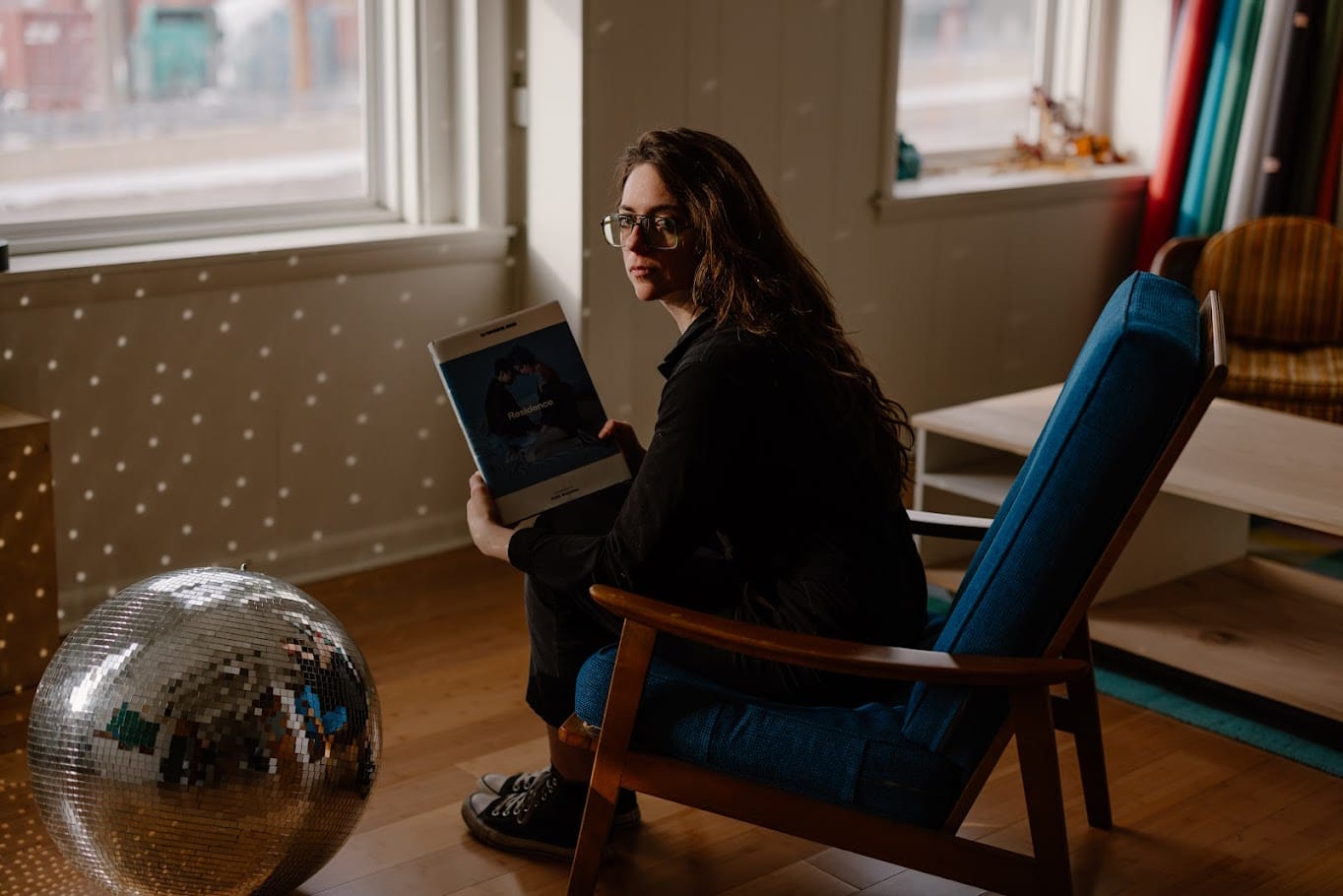Interview 087 • Feb 5th 2024
- Interview by Lou Noble, Portraits of Kate Sweeney by Megan Leigh Barnard
Links
Foreword
Creating a book that encapsulates Kate's remarkable work during her residency from 2016 to 2019 marks a significant chapter for us at TPJ.
The creation of "Residence" has been a deep dive into Kate's extensive archives, enabling us to document her artistic journey in a print medium that captures the essence of her work with stunning clarity.
This revamped edition has revitalized her extraordinary work, offering new perspectives that are enhanced by the perspectives that only time can provide. The vibrant colors, textures, and modern layout offer a new experience beyond our online platform, providing a fresh lens through which to appreciate her artistry.
We are immensely proud of this collaborative effort. It reflects a shared dedication between Kate as an artist and TPJ as her publisher, driven by a mutual promise to highlight the pinnacle of Kate's work during her residency.
— Agustin Sanchez (Founder, TPJ)
⁂
This interview has been edited for clarity and content.
Interview
How do you feel about the book now that it’s all done?
It’s surreal, just working on it for so long, and also spending so much time with these photos over the years. It’s surreal to see them all put together, and also printed, not looking at them on a screen.
How did you like having it physical?
I love it! I keep looking at it. It feels really good. And it’s cool to see, I mean, so much of the work is from 7 years ago, now. That part’s wild.
Were there things about the pictures that occurred to you that you hadn’t really thought about before?
The hard-hitting questions.
Haha!
I don’t know. When you revisit a shoot from years ago and you always choose to edit different photos than you did the first time. So, yeah, some of them, it’s nice to revisit because I feel more connected to them now maybe than when I shot them originally. Some of them I don’t even remember taking, you’re so in that moment at the time, you don’t really have a conscious memory of taking the image, but looking back on them…you can see the moment in a different way.
But I like that shift in perspective because then you can view the images more objectively. You are more removed from them. It was always cool to see how you would edit the essays versus how I would, versus how Agustin might. I like that process in trusting that the story is coming together without me because I may put images together because I’m so emotionally attached to them.
Mhmm, yeah. Did Agustin’s edit surprise you in anyways?
Yes, and no, I think there were certain essays…for example, the Oasis photos from Griffith Park.
Oh yeah.
There were photos in there that, when I was editing those photos, I almost didn’t even include them. These dreamy ones.
Mhmm.
I remember editing these photos and being like, these are so bad. And then he put them in, and I was like, wait those photos. I forgot about those, but it took someone else, I think it was my mom, actually. She was looking at the book. And she was like, no, the dreamy photos make it feel like this woman just appeared on this really cool planet, it like, she had this whole story about it. It feels like she’s from another world and she’s like dissipating and appearing into the scene.
Mmm, yeah.
It made me look at them in a different way and I was like, okay. Yeah, we’ll just keep those in there. Because again, people are able to create their own narrative about the images. And I like that.
Yeah, essentially he’s creating different stories than I did.
Exactly, versus how I would put them together. And so I’m glad I didn’t put them together. It feels completely distinct from the original essays.
I mean, do you see your journey, artistically, from that first photo essay to now?
Yeah, I think it’s both, some of the older essays I think, okay if I shot that now, I would do this this and this differently, but also some of them I feel so inspired by and want to get back to that kind of place, where I wasn’t shooting for a living, and where I could just be so free in making whatever I wanted to make. Which I can obviously still do now, but it feels different and the earlier essays feel very much like I’m still exploring and trying to figure out my voice.
Mhmm. Are there particular photos in your head you’re thinking of when you’re thinking of that idea of like, oh, I wish, I want to get back to that photo?
Hmm. Well, I mean, I’m thinking of the very first one, the Fourth of July one. I remember making that and I mean, I felt so all over the place but it ended up coming together and I really approached that essay in particular, I remember very much from an editorial mindset, trying to recreate this memory in this vision I had at a young age. I think I still did that in other essays. I mean every essay feels so different to me but something about that first essay. I’m very inspired by and want to get back to that place of, I’ve got this just curiosity and bigger vision.
Like zooming out and trying to create a story.
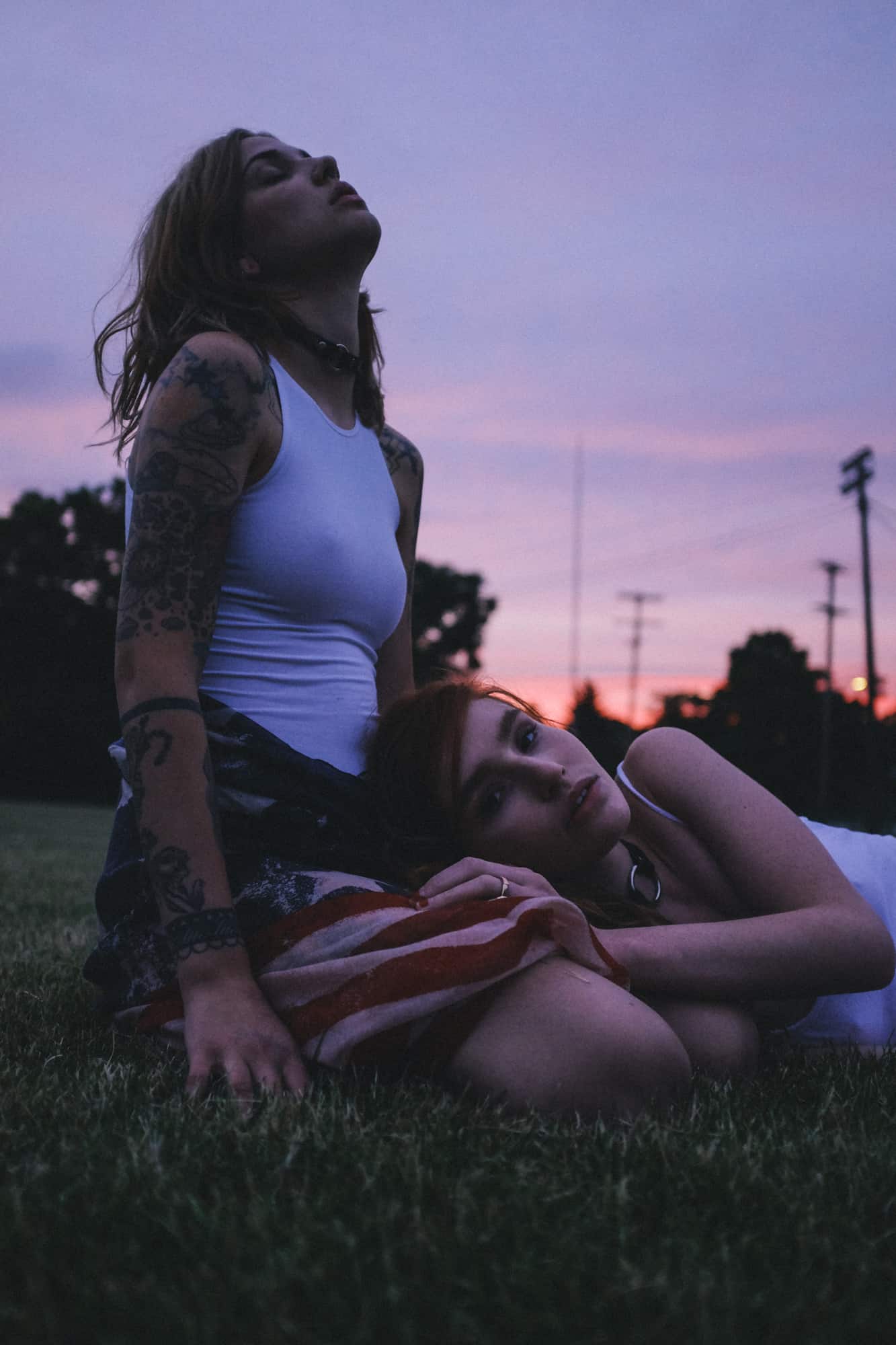
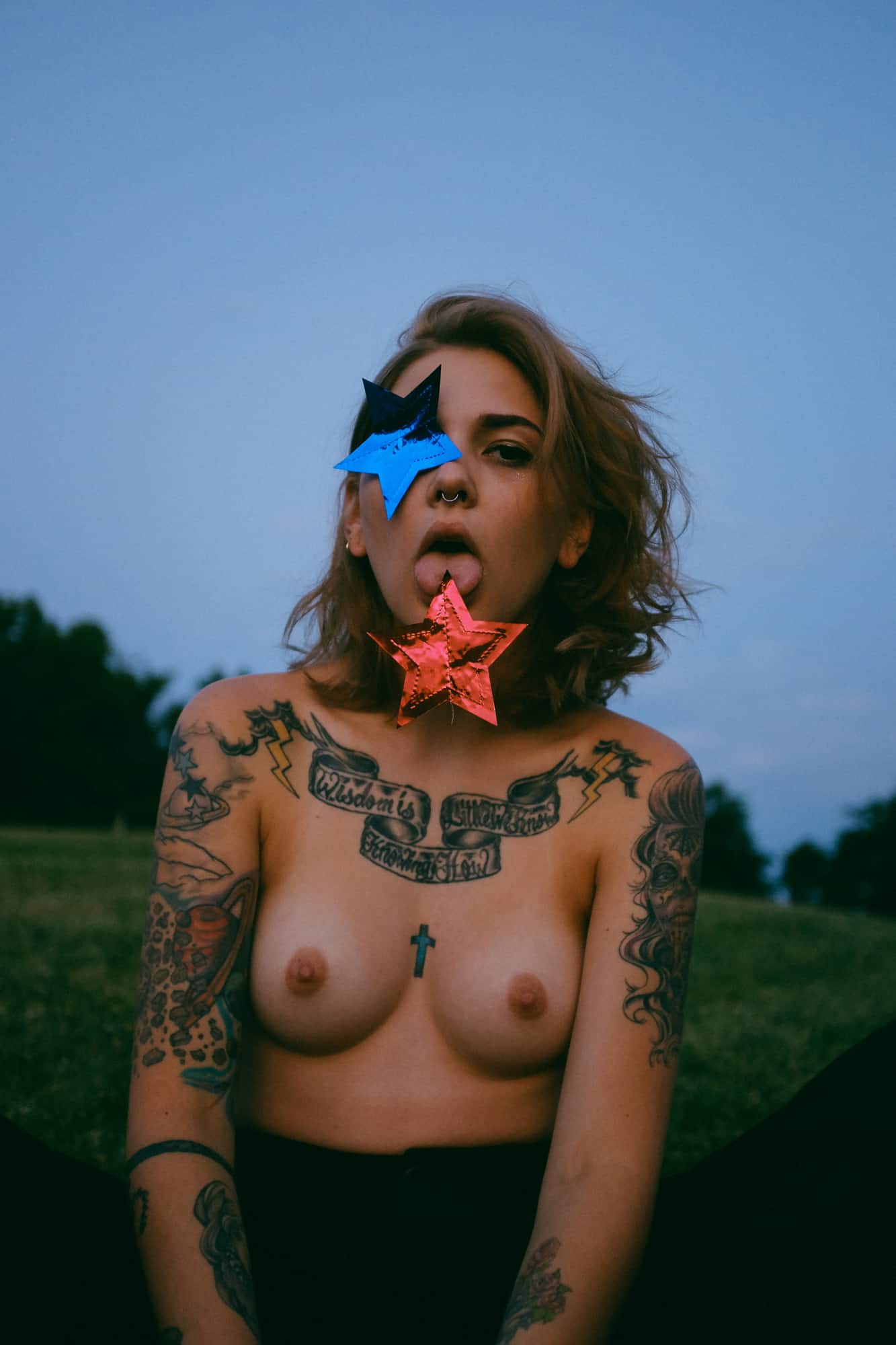
Deliverance, 2016
Yeah, that was a winner.
That was a winner, and yeah, there’s energy to that essay and I would love to get back to that place. I mean, I still shoot from that place sometimes but it feels more difficult for me now.
Why do you think it’s difficult for you?
I think maybe I’m just too in my head. And I think doing it full-time does that. I mean that essay, I didn’t even have time to be in my head about it because you gave me like two days notice or something.
Yep!
My whole approach to that one felt so intuitive and emotional, and I think that’s the place that I make my best work from, or any artist really. It should feel personal and emotional and I think the longer you do it for your career…I mean, it’s just so easy to get in your head about it and overthink every little thing.
When I shoot now, there are moments where I’m looking through the viewfinder of my camera and I’m thinking in my head what will make this photo better. And I didn’t do that at that time, if that makes sense. I just was like, wee, let’s go over here, let’s go, I wasn’t critiquing myself.
Yeah, in the moment.
In the moment.
It feels like you have maybe three different modes you like to operate in, right, where there’s there’s that outdoor, wild field. There’s your studio, which is controlled and very intimate.
Yes.
And then there’s maybe a slight conceptual mode.
Yeah, yeah! I very much resonate with that, that’s a good observation. I do feel like I operate in different modes, especially between my outdoor shoots versus my indoor.
Where do you feel drawn to right now?
I always feel drawn to the outside. But you know, where I live, that’s not always an option, but that is where I’m most inspired and where I feel the most free in how I can approach making the images, and it’s the outdoor shoots that I find to be the most rewarding and exhilarating because there’s so much you can’t control, especially when you’re shooting outside and using natural light and using the weather, you just have to go with what nature is providing but the images always feel more magical. And I love my studio stuff, too. But again, it’s very controlled and very intimate and when you’re shooting on a backdrop, it’s like what can you make in this box.
So it’s challenging, which is good. It’s a totally different approach. Outside it’s like 360.
What’s kind of the biggest change you’ve noticed in your work, or maybe, what’s the biggest evolution?
I don’t know like, technically, but I do know that I can see how I’ve changed as a person throughout. Throughout the years in the essays, and maybe how I’m approaching those connections with the people in the photographs. Technically, I don’t know, because there’s so much, like I said, there’s so much I feel like I’m missing now that I wasn’t in the earlier work. I want to like fuse what I know now with the way I worked then. It’s a weird balance, how can I apply what I know technically now with the innocence and the curiosity that I had at the beginning.
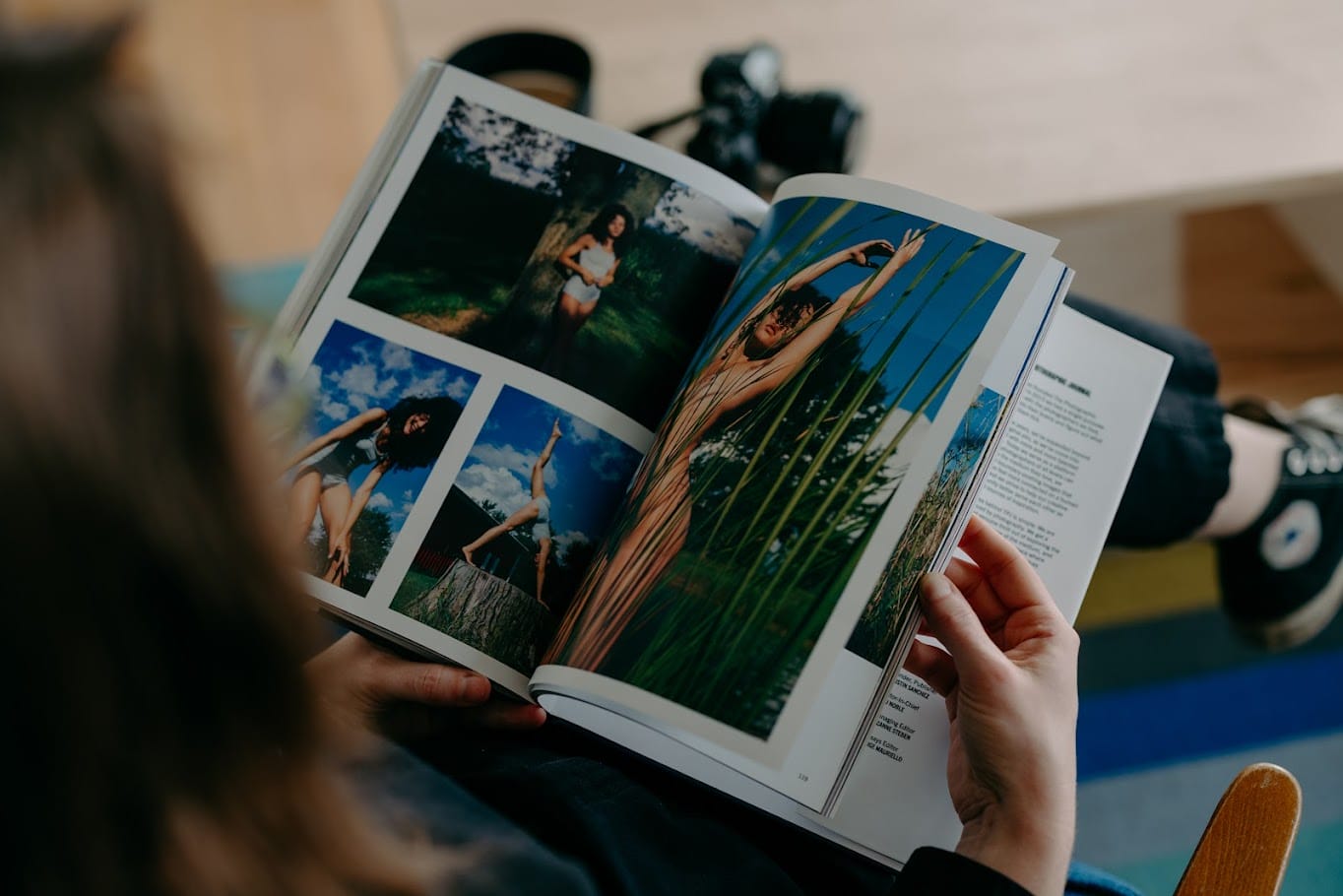
Alayna at the Farm, 2022
As a person, how do you think you’ve evolved during that period?
A lot. I mean, it’s basically the difference between your 20s and your 30s, you know, and I’ve changed a lot. That’s such a fucking existential question (laughter) It’s all me, like, I’m still the same. It’s still 15 year-old me who just loves photography and wants to shoot the cover of a magazine one day.
What was it like having to make work every month for your TPJ residency?
It was great. I mean, of course there were times that I dreaded it because there would be times where I was a lacking inspiration or motivation. I think that’s why we didn’t include every essay in this book, because certain ones I didn’t…I didn’t put my whole pussy into it, you know.
HA!
Haha! But it was nice, I was already trying to shoot as much as possible at that time, especially in the beginning, because…sometimes I think about in a 10 year span of time and going back to like 2014, almost all of the photos I shot were on my phone. I was shooting constantly, and I was just shooting in whatever way I could, and people made fun of me for that all the time back in like the Tumblr days.
You know, “did you take these with your phone? Are you even a real photographer?” It’s cool to see how far I’ve come in that amount of time and, all that to say, I was already in this like place of, “I want to shoot all the time. I want to get better and better and better and better, and so the thing with you guys, it was like divine timing because then, you gave me this opportunity to basically create whatever I want and you’d put it up and that was great. There were certain essays I feel like you prompted, or you’d be like, “hey, what if you do this kind of thing,” or “why don’t you shoot this person,” and so that was always helpful.
It was great. It’s good discipline. I feel like I should force myself to do that again, or at least do one personal shoot a month.
Right now, is most of your photography for work?
It is and I think that’s why I’m feeling so inspired by this book, and revisiting some of that early work. Because again, it’s like I just want to go back to that place of just shooting for the hell of it and not always thinking so much about my business. It’s hard to separate that sometimes, because it is all wrapped up in one and then I feel like, me as a person, is wrapped up in all of that. Shooting for a living is really hard and sometimes it’s like I need a fucking break.
But I don’t want to not be shooting my own stuff either. So yeah, still trying to find that balance.
That seems to be a common challenge when we’re talking to other photographers, when you’re job is photography, the last thing you want to do to relax is more photography.
Right.
Is there a particular favorite you have from your residency?
That’s so hard, I feel so attached to all of them, they’re all such different stories and experiences. But I really do love the one we did as the end of the residency. The Oasis one. I just loved that whole day and I feel like that was another day that kind of felt like that first essay, which is my favorite way to shoot, if I could do every shoot that way, I would be so happy.
Just, let’s go outside to a beautiful location and just see what we can make. That is what I live for.
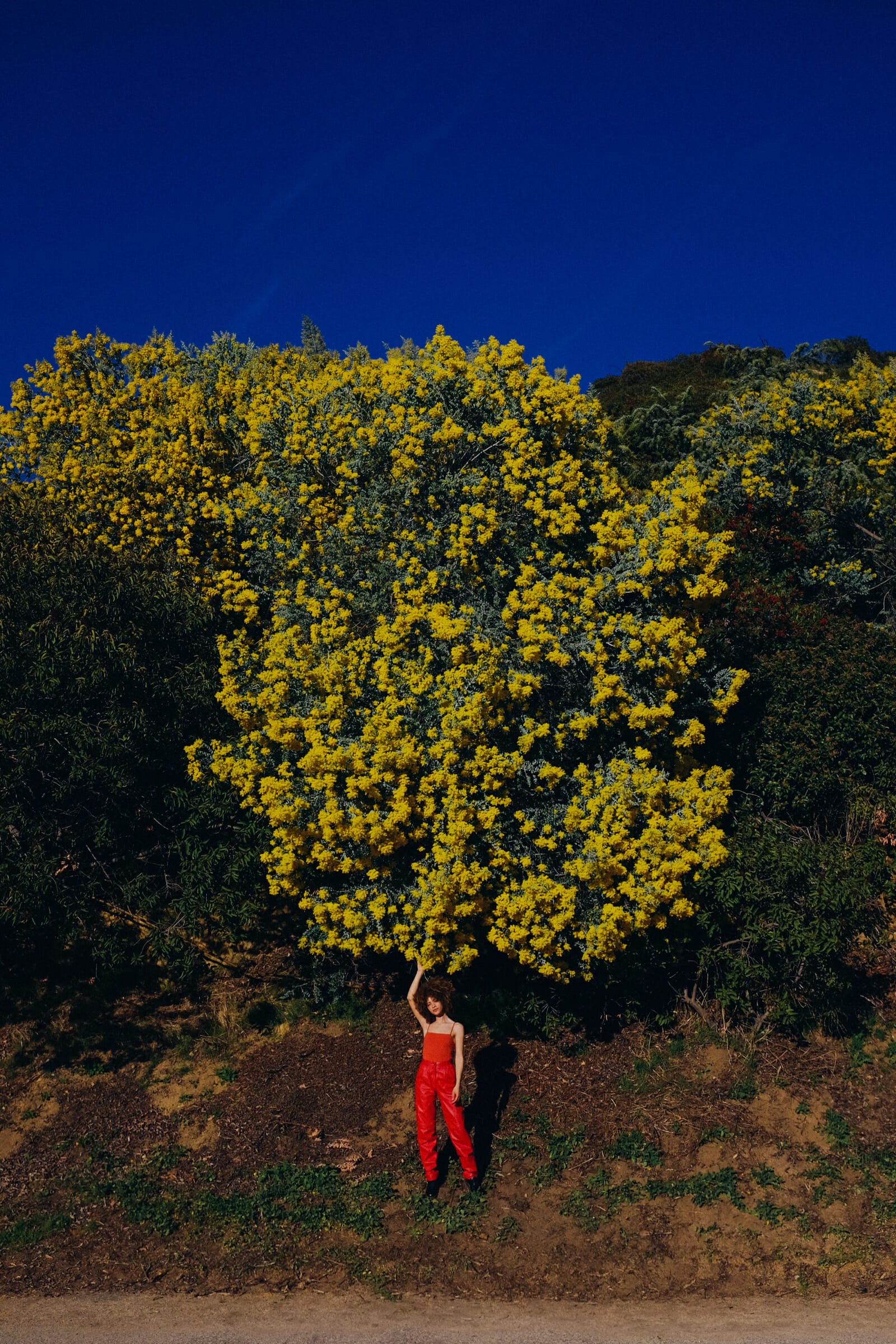
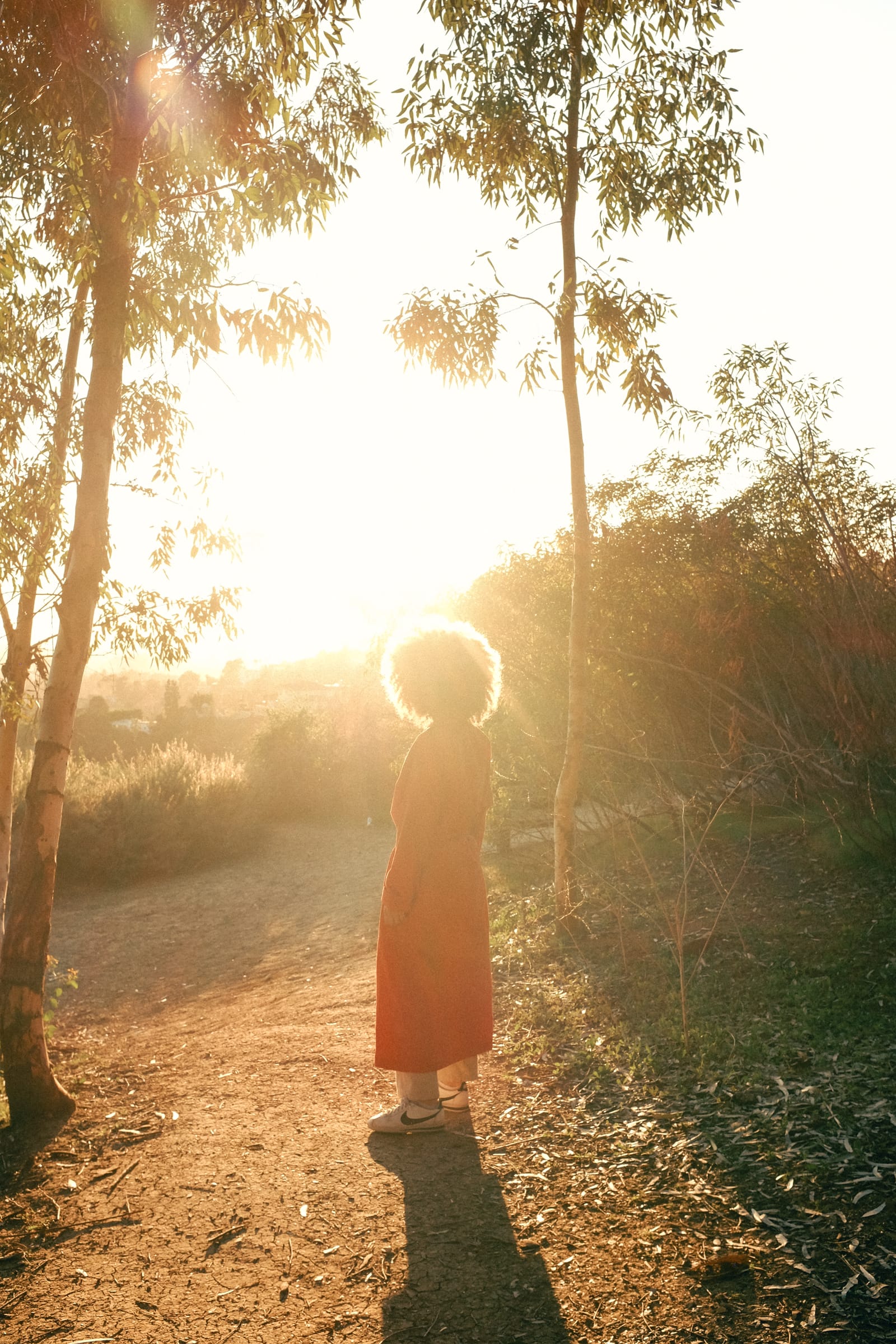
Oasis, 2020
One I’m curious about, is when you worked with Sylvie and Maika together. What was that like? What were you going for there?
I felt so all over the place because I think I came to the shoot with a list of ideas and I don’t do that a lot, but I think for that shoot, I knew I wanted it to be really strong. And so there were…sometimes I have no idea what I’m going to do and then it turns out great, and other times I have a very specific shot in my mind because, I don’t know, dreamt it or the visual will just pop into my head. And so I remember that photo of their butts. That was a shot I knew I wanted to take beforehand, with the lemon on the ground.
Where’d that come from?
I don’t remember. I was also thinking about me and my mom, and how you have these physical similarities even in the way your body is shaped, and I also knew both of these people going into it. It was like I knew about their similar physicalities and I really wanted to make it feel like it’s a mirror, like they’re mirroring and this twin energy and sameness. But as two separate people. But that shoot, a lot of it was very unplanned, very magical, they clearly have a very close relationship, they were physically so trusting and comfortable with each other and I don’t know a lot of people that have that with a parent.
Right.
Which is why I wanted to shoot them together, because their bond is really unique and strong, and the photos with the food and all the fruit and stuff, they said that felt very natural to them and how, growing up poor all they had was each other and they tried to keep everything, like everything was food and laughter, even when everything else was so uncertain and so hard. Those were the things that they had and so I remember making sure we had a lot of props in that shoot because I knew that they would be so good at basically playing make-believe, in creating a world.
Yeah, it really, the intimacy between them, that lack of any kind of physical friction, you know, that’s just…Like, if you were like, now go be one person, they would just walk into each other.
Totally. You could tell that they felt such a freedom being vulnerable together. That just felt so natural to them. So I felt very honored. I remember I was very quiet during that shoot. I didn’t participate a lot because I really just wanted to observe their dynamic and I wanted them to forget that I was there.
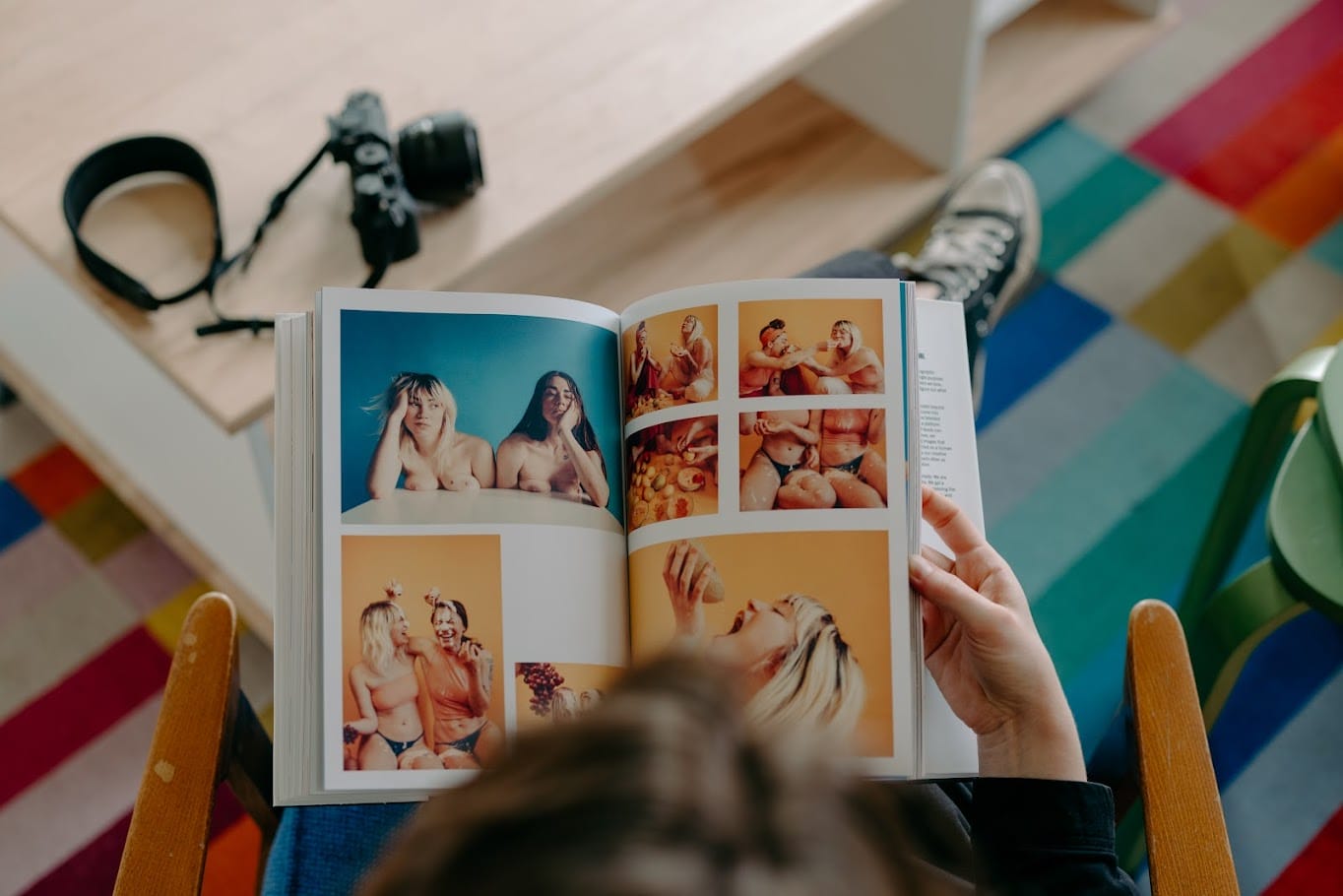
Momka, 2016
Do you do a lot of work within these sessions to create that kind of feeling of intimacy, normally?
I think that just because of my history and the way I was raised and just who I am as a person has really made it easy for me to be in that environment and be a calming energy for other people. I don’t think it’s something I consciously do, but it’s just natural to me to keep the focus off of myself.
My trauma makes me a great photographer.
Ha…oy! The Madonna Inn session. What do you remember about those photos?.
That was a big “winging it moment.” I wish I had done more, instead of just, I don’t know, sometimes I’ll be shooting and think, “I know this is too dark,” but I don’t do anything in the moment about it. And I wish that I had, but it was also one of those, like I said, we were winging it.
That location is so inspiring and beautiful and yeah, I wish we had more time.
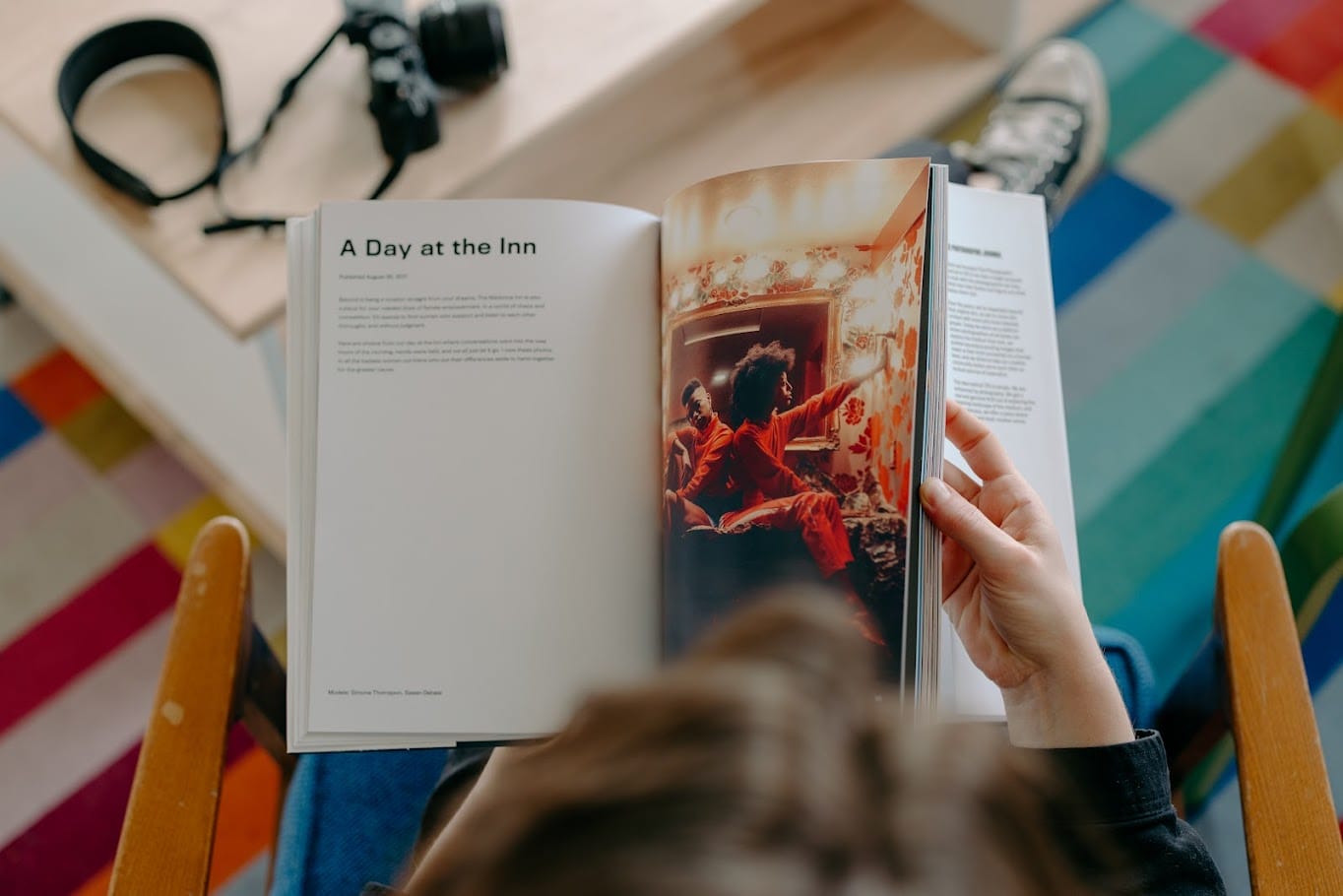
A Day at the Inn, 2017
What about the self-portrait photo essay.
Mhmm. Well, sorry to all of my aunt’s that bought copies of this book.
Hahaha. Because I when I first discovered your work, on Tumblr, self-portraiture was a heavy heavy part of your practice.
Totally.
How has that changed for you over the years?
Hmm. It’s changed a lot. I don’t love to be the center of the work anymore, but I remember, at that time when everything was so self-portrait heavy, a lot of that just had to do with the fact that technically, I didn’t know what I was doing and I had never photographed a model before. I had taken photos of my friends and…I used to make my little sister do a bunch of stuff, weird shit for me in high school.
Heheh.
But the self-portraiture time, the Tumblr time…I was very sad and I think it was the only way I knew how to express myself.
Mmmm.
And it still kind of is…photography is how I make sense of everything. How I make sense of the way I feel. And yeah, it was 2014 or something that I had my first shoot with a model, and then everything opened up, it was just like, “holy shit, let’s go” and then I was non-stop shooting.
Who was the model, do you remember?
I do, her name’s Caitlin Michelle. She was a full-time, traveling nude model. And that change, she was really good, too. It was so overwhelming, photographing someone else that knew their body and knew how to inspire a photographer. So that was cool.
With this series that you included in the book. What were you after?
Hmm. I remember, I wanted it to be extremely vulnerable.
Oh, yeah.
And there were photos of my partner and I in the essay that I ended up…I think they were in the original edit of the book and, you know, we’re still together, but I was just like, those feel a little too vulnerable for me now. I wanted to keep the focus on myself and where I was at that time. I mean, I was 29 when I did those, it feels like a long time ago.
Do you feel very far away from the person in those photos?
Yes and no. I mean, I’ve evolved so much, but I still feel very connected to that person, and when I read the intro, I remember writing that and it takes me right back to how I felt at that time. And then I lived in that house for four more years after that.
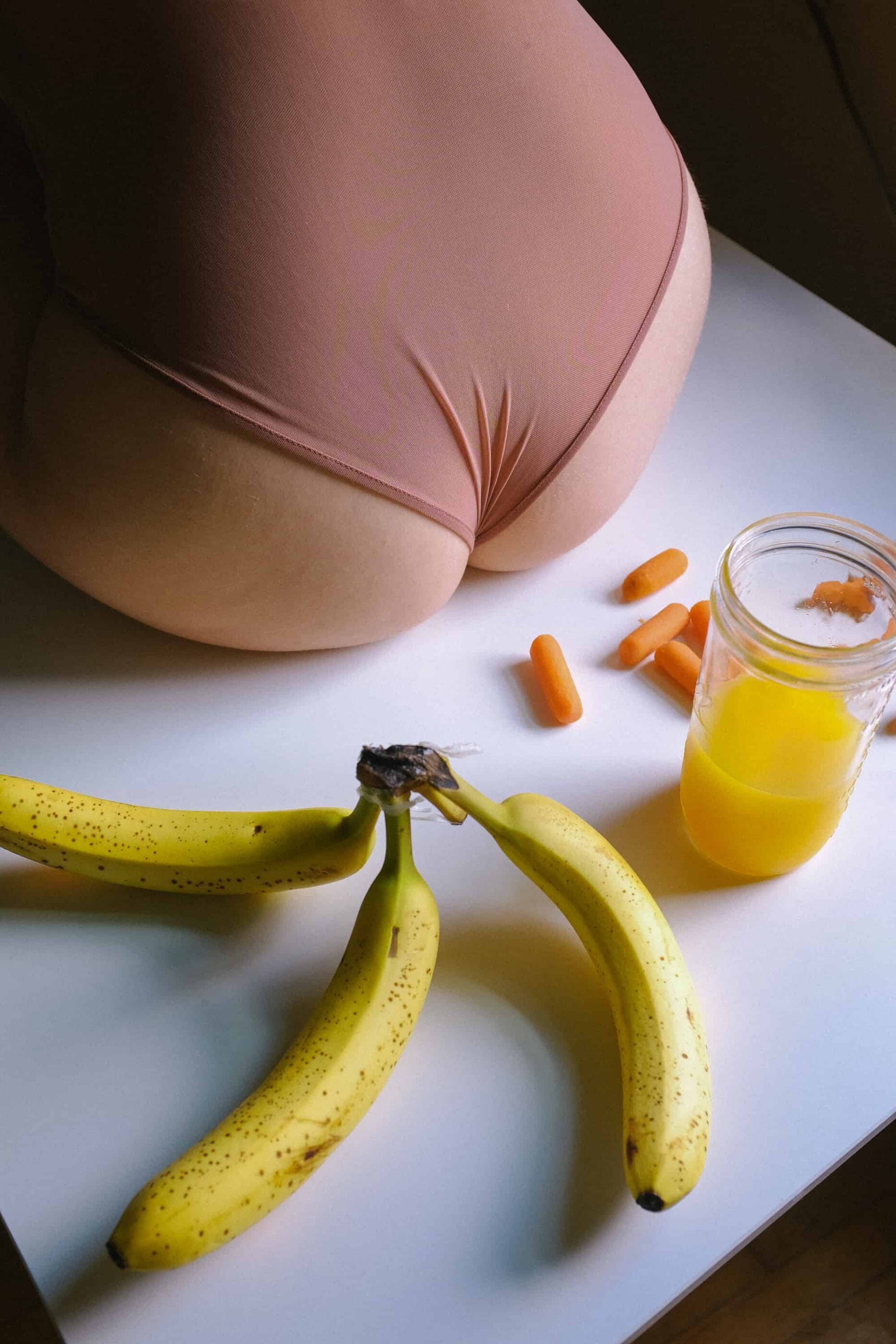
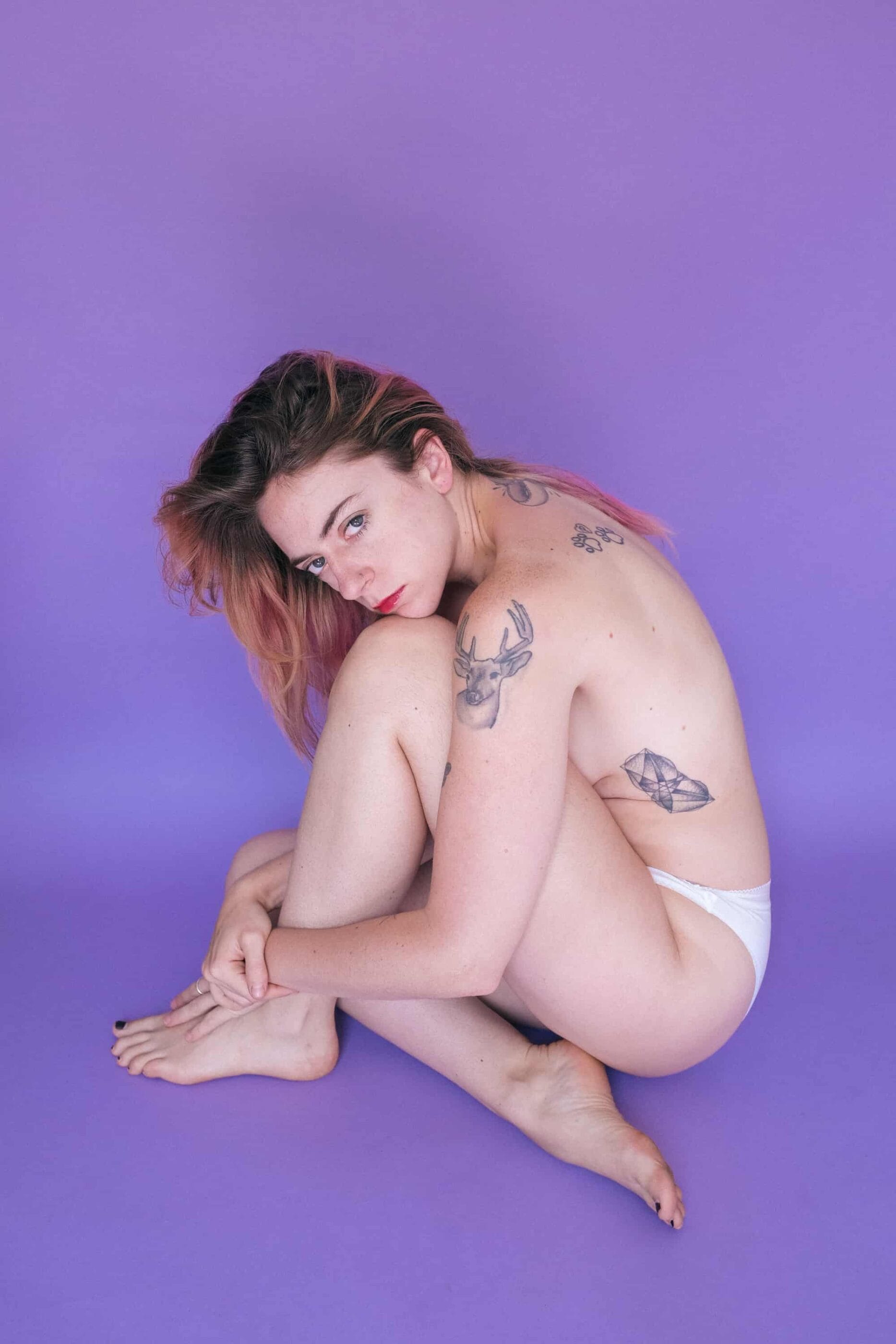
In This Place, 2017
So you were there for nine years.
Yeah I was there for nine years. And so I made these, I really wanted them to be like how I felt in this house that I lived in and how much I grew as a person there. I’m really happy, I still love this essay so much.
Yeah, it really feels like it captures everything you were doing at that time, artistically.
Yeah, and I specifically chose like areas of the house where I spent a lot of time, as well, the kitchen table ones with the carrots and all that, and then, my studio, obviously, the bathroom, spent so much time in that bathroom. But yeah, these photos are very me.
It takes me right back to that place of feeling on the cusp of a change, feeling on the cusp of an evolution, in between the old Tumblr self-portrait vibe, that’s very emotive, it’s very raw versus, a more refined, intentional creative choice. It straddles, and you can see that, the bathroom self portraits feel like old work to me, and then you go to the really colorful studio backdrop stuff and, yeah, I wanted it to feel all those things at once.
Mhmm. I think we’ll talk about one or two more.
I love all of them!
Haha, how about the Pink Ladies essay.
Oh, yeah!
You know, that one really, that also feels like such a sophisticated, classic version of your outdoor mode, what was shooting all that like?
That was, yeah. That was a lot of work, a lot of shoots. And you know, obviously there’s so much not included here. But I think we did seven shoots.
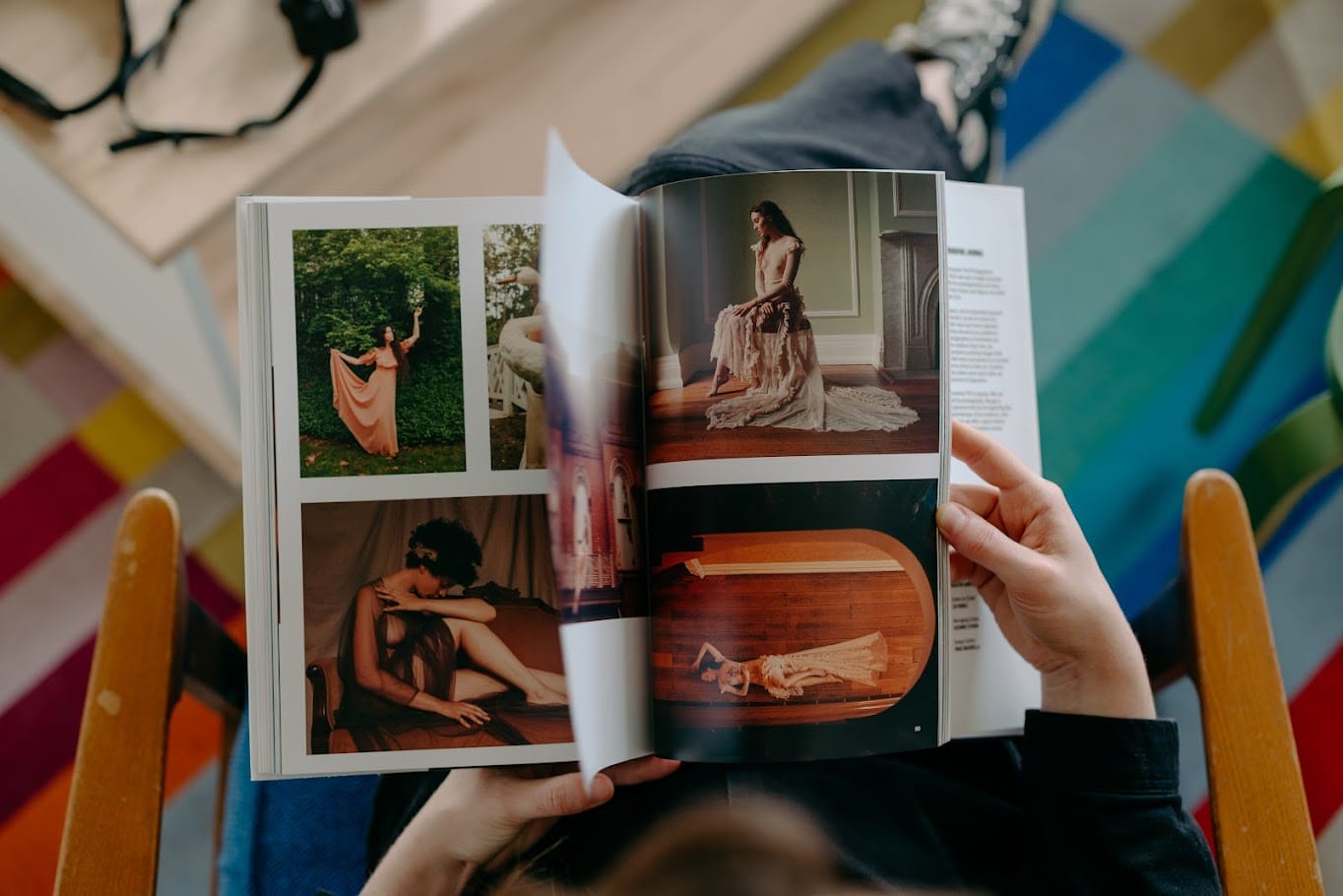
Pink Ladies, 2020
On multiple days?
Oh, yeah, it was months and months. It’s incredible looking at these images because it was just me and my friend Ariana, who worked at this mansion in Downtown Columbus, and she’s the reason why we made any of this work. It was me and her and the model, that was it. And so it’s cool to see what we made with literally nothing, I think I used a reflector in a couple of these shoots, but that’s it.
We were so in it during that time that it’s cool now to look back and zoom out of it and see it as a body of work. It feels a lot more impressive than it did at the time making it because you’re just like, “I don’t know, we’ll just shoot this person in this spot with this cool dress and just try to make it look Victorian.” Sometimes you don’t really know what the work means until much later.
Right, right. Something that really pops out at me about this one is just how well you use the spaces you’re in.
Thank you. That’s why I try not to go in to shoots very often with so rigid a plan because so much of this I couldn’t have imagined until we got into the space and then it’s like you don’t know how the light is coming in the window, or, you don’t know until you’re in there and then it’s like “okay, well we haven’t shot in this room yet, so let’s do that today,” and you’re like, “oh my god. What the hell am I going to do in this room?” It really pushes you to be very creative on the fly and to me, those are always the best images.
Does that push make you operate more instinctively?
Totally, I think so. I mean, what else are you going to do.
Right, so, a situation like that where you don’t have it planned out ahead of time, where you don’t know what it’s like, forces you to be more in the moment and less in your head.
Exactly. That’s probably why that’s like my favorite way to shoot, because yeah, it feels more intuitive.
And it’s forcing you to, like the outdoor shoots, like the trips we went on, to be in the moment.
I love that, yeah, totally, it forces you to be in the moment and then you have this image to encapsulate that moment and what you were seeing, at that exact time. Outside of that, each model had such a different vibe and I always want the person to feel like themselves. So just kind of go with the flow of their energy, too.
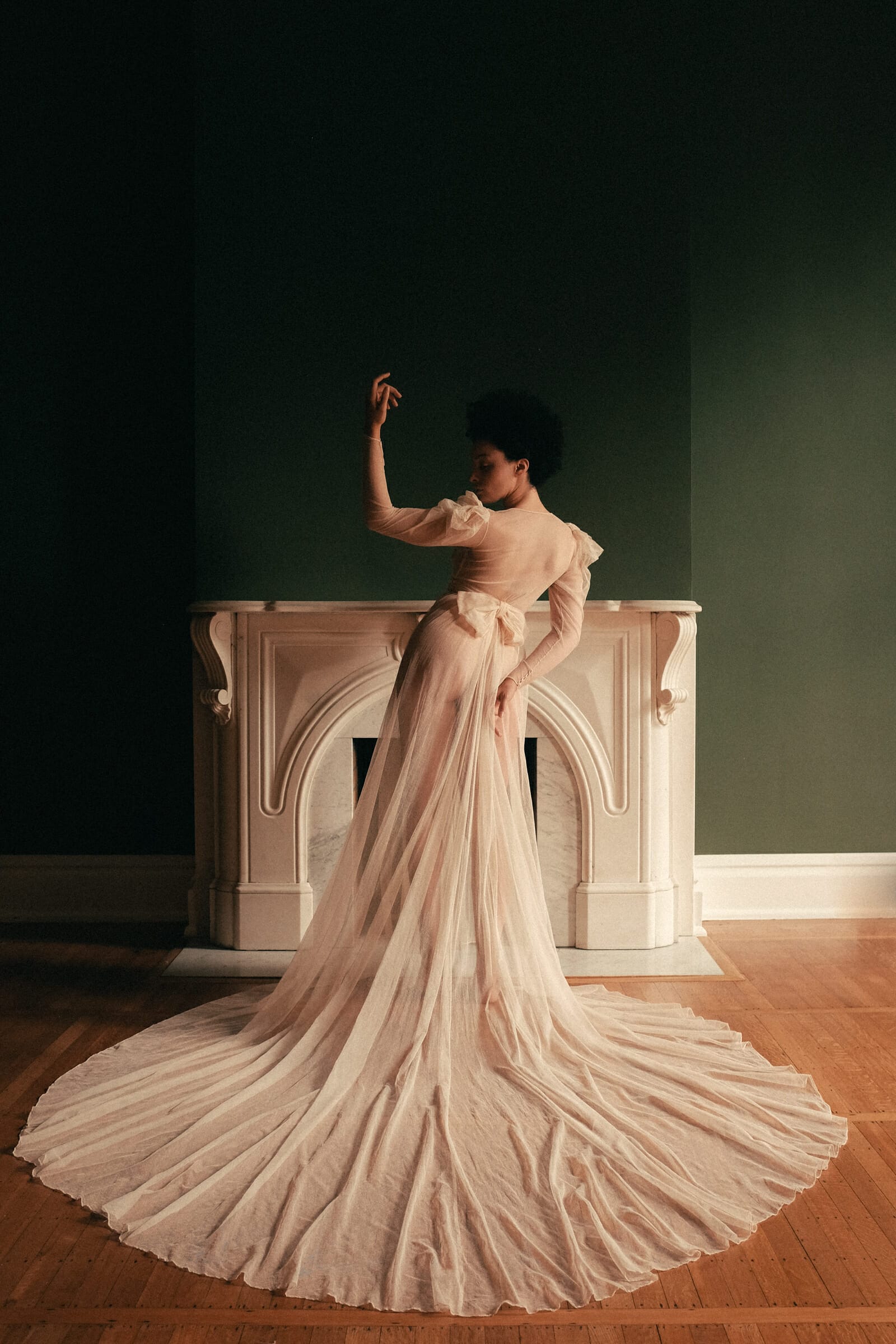
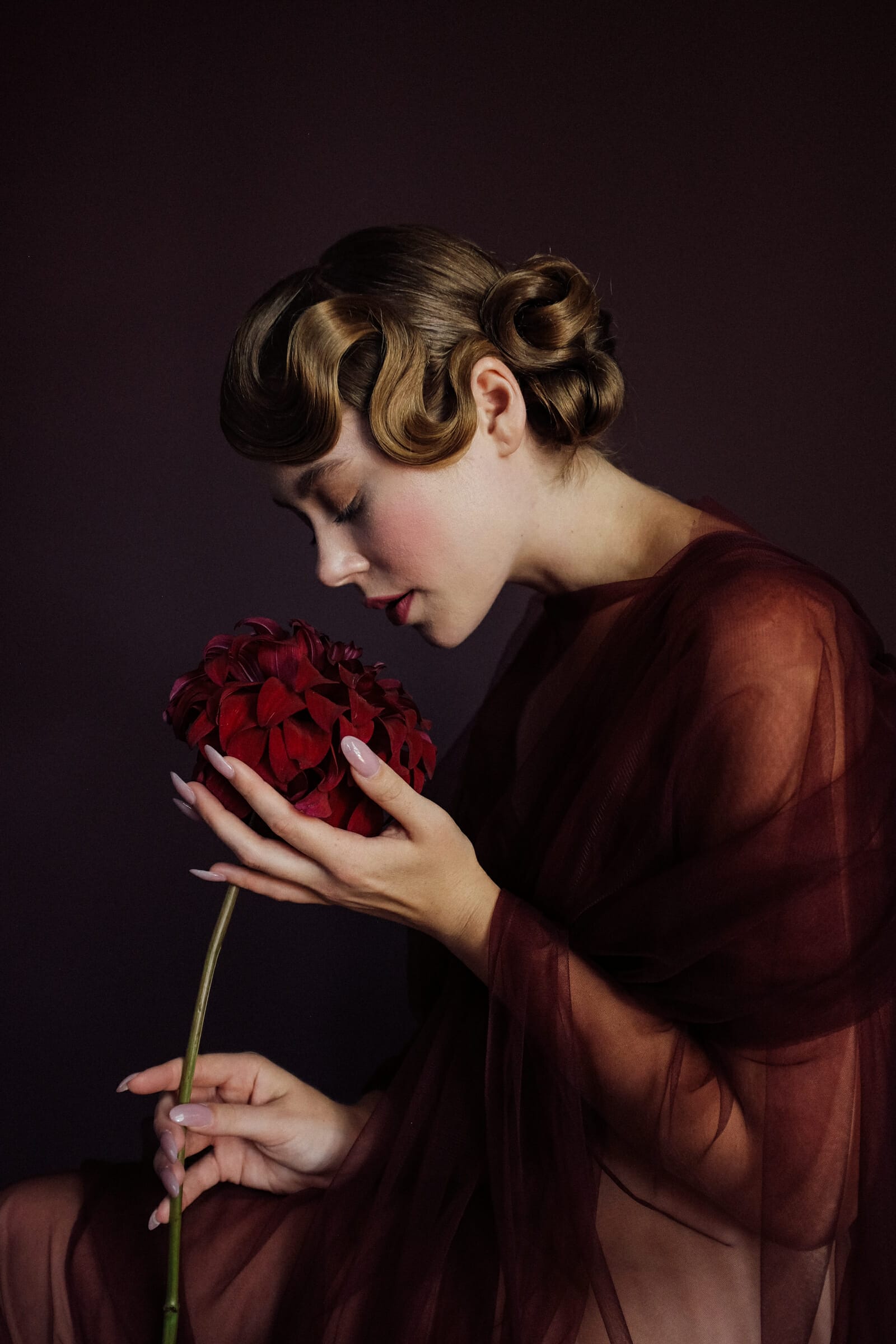
Pink Ladies, 2020
That brings up my last kind of topic is, and we don’t really see this too much in the book, but generally speaking, you like to work with subjects multiple times.
Mhmm. I really do.
What is it you get out of those repeated sessions?
Well, it’s an intimacy that you don’t get when you just photograph someone one time and then maybe you never even see them again. And I have a lot of shoots like that and they’re great shoots, you know, and there’s something really beautiful about that, as well, two people coming together in this time of life and we make some shit and that’s amazing. And now we have the photos to look back on forever…but I enjoy this long-form portrait of the same person over many years. And that also feels like a thing that maybe I don’t understand yet. But I will one day, if that makes sense.
Yeah, yeah.
In the same way that creating self portraits for so many years, I feel that way when I’m photographing the same people and it’s also people that are close to me in my personal life. So there’s such a deeper level of trust. And I think the images are more vulnerable. They feel more true, and not projections of this person or my my reflection of the person or the person reflecting me, it feels more like really who they are.
Mhmm. Last question, because we ask everybody. Which do you prefer, the process or the result?
The process. One hundred percent. I think the result is a bonus, the result is the icing, but it’s the process that keeps me alive.
Yeah! Thank you for your time, Kate! This has been wonderful! You’re wonderful!
Kate Sweeney: Residence is now available in the TPJ Shop!
